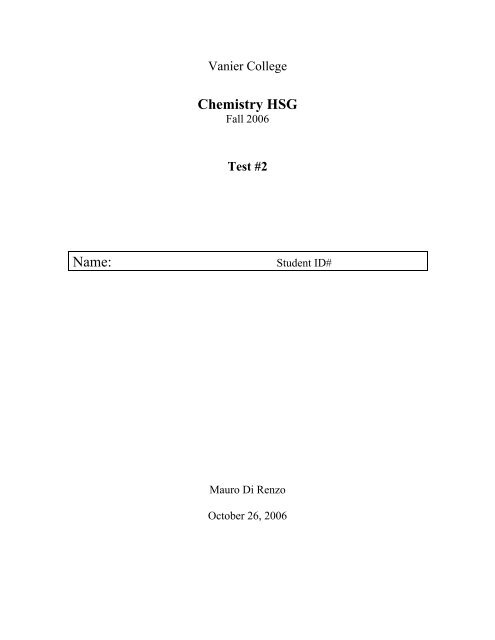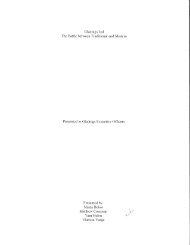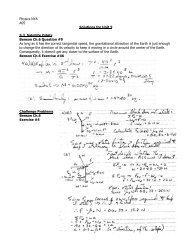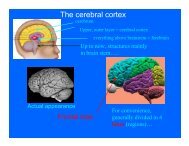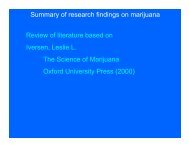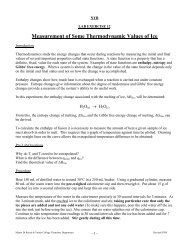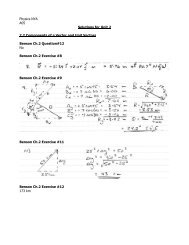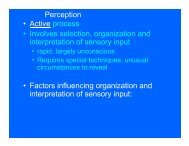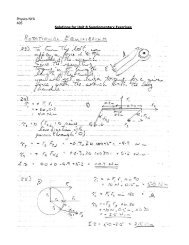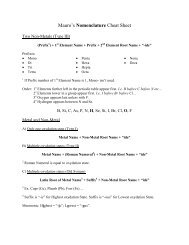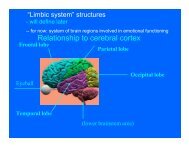Test2 HSG F2006.pdf
Test2 HSG F2006.pdf
Test2 HSG F2006.pdf
You also want an ePaper? Increase the reach of your titles
YUMPU automatically turns print PDFs into web optimized ePapers that Google loves.
Vanier College<br />
Chemistry <strong>HSG</strong><br />
Fall 2006<br />
Test #2<br />
Name:<br />
Student ID#<br />
Mauro Di Renzo<br />
October 26, 2006
Chemistry <strong>HSG</strong> – A’06<br />
Test #2<br />
Question #1 (10 marks):<br />
• Name the following compounds: (1 mark each)<br />
a) H 2 CO 3 (aq)<br />
b) CuO<br />
c) P 4<br />
d) KMnO 4<br />
e) N 2 O<br />
• Give the chemical formula of each of the following compounds:<br />
(1 mark each)<br />
f) Boron monophosphide<br />
g) Hydrobromic acid<br />
h) Chromium (III) iodide<br />
i) Sulfurous acid<br />
j) Lithium chlorate<br />
2
Chemistry <strong>HSG</strong> – A’06<br />
Test #2<br />
Question #2 (15 marks):<br />
Hydrazine (N 2 H 4 ) is used as both a rocket fuel and a pesticide. It is the result<br />
of a reaction between sodium hydroxide, ammonia (NH 3 ) and molecular<br />
chlorine. Sodium chloride and water are by-products of the reaction.<br />
a) Write the balanced equation for this reaction. (2 marks)<br />
b) What is the yield in hydrazine formed from the reaction of 120.00 g of<br />
sodium hydroxide, 50.00 g of ammonia, and 100.00 g of chlorine<br />
(8 marks)<br />
c) Calculate the number of moles of each reactant that remain at the end of<br />
the reaction. (5 marks)<br />
3
Chemistry <strong>HSG</strong> – A’06<br />
Test #2<br />
Question #3 (10 marks):<br />
The most intense line in the cerium (Ce) spectrum is at 418.7 nm.<br />
a) Determine the frequency of the radiation producing this line. (5 marks)<br />
b) In which part of the electromagnetic spectrum does this line occur<br />
(2 marks)<br />
c) Is it visible to the human eye If so, what color is it If not, is this line at<br />
a higher or lower energy than visible light (3 marks)<br />
Question #4 (10 marks):<br />
Calculate the wavelength, in nanometers, of light with an energy content of<br />
1799 kJ/mol.<br />
4
Chemistry <strong>HSG</strong> – A’06<br />
Test #2<br />
Question #5 (10 marks):<br />
Using quantum numbers explain why there are always three “p” orbitals on<br />
any shell with a principal quantum number (n) value higher than 1 (In other<br />
words: Why are there no “p” orbitals on the first shell; and why are there<br />
only three on all the other shells)<br />
Question #6 (10 marks):<br />
Bohr’s equation for hydrogen-like elements (He + , Li 2+ , Be 3+ , etc…) is<br />
presented below (where Z is the atomic number):<br />
2<br />
Z B<br />
E<br />
n<br />
= −<br />
2<br />
n<br />
For hydrogen, electronic transitions from n > 2 to n = 2 emit photons which<br />
are in the visible range of the electromagnetic spectrum. Demonstrate<br />
whether a photon emitted from the electronic transition n = 3 to n = 2 for the<br />
He + ion is also in the visible range of the spectrum.<br />
5
Chemistry <strong>HSG</strong> – A’06<br />
Test #2<br />
Question #7 (10 marks):<br />
a) For each of these elements, give the abbreviated electronic configuration<br />
for each of the elements below and underline any sub-shells that contain<br />
valence electrons.<br />
• Y:<br />
• At:<br />
Question #8 (10 marks):<br />
Which of the statements below is (are) correct for an electron with n = 4 and<br />
m l = −2.<br />
• The electron is in the fourth shell.<br />
• The electron may be in a “d” orbital.<br />
• The electron may be in a “p” orbital.<br />
• The electron must have an m s = +½.<br />
Question #9 (15 marks):<br />
For the following elements: C, Mg, Na, O, Rb, Si<br />
a) Place them in increasing order of atomic radius: (8 marks)<br />
b) Place them in increasing order of ionization energy: (7 marks)<br />
6
Chemistry <strong>HSG</strong> – A’06<br />
Test #2<br />
Bonus Question (5 marks):<br />
The first four ionization energies of the element beryllium are I 1 = 900<br />
kJ/mol, I 2 = 1760 kJ/mol, I 3 = 14 850 kJ/mol and I 4 = 21 010 kJ/mol.<br />
Estimate beryllium’s energy of fifth ionization (I 5 ).<br />
Mauro’s Official Cheat Sheet<br />
Good Luck ! <br />
Electromagnetic radiation: c = λν<br />
Planck’s equation: E = hν<br />
Bohr’s equation (hydrogen): E n = – B/n 2<br />
Some constants:<br />
Avogadro’s number = N A = 6.022 x 10 23<br />
particles<br />
Planck’s constant = h = 6.63 x 10 –34 J•s<br />
B = 2.18 x 10 –18 J<br />
1 J = 1 kg m 2 s –2<br />
Speed of light = c = 3.00 x 10 8 m s –1<br />
1 nm = 10 –9 m<br />
The EM Spectrum<br />
Wavelength (m)<br />
visible<br />
Violet<br />
Visible spectrum<br />
Blue Green Orange Red<br />
400 450 500 550 600 650 700<br />
Wavelength (nm)<br />
7


